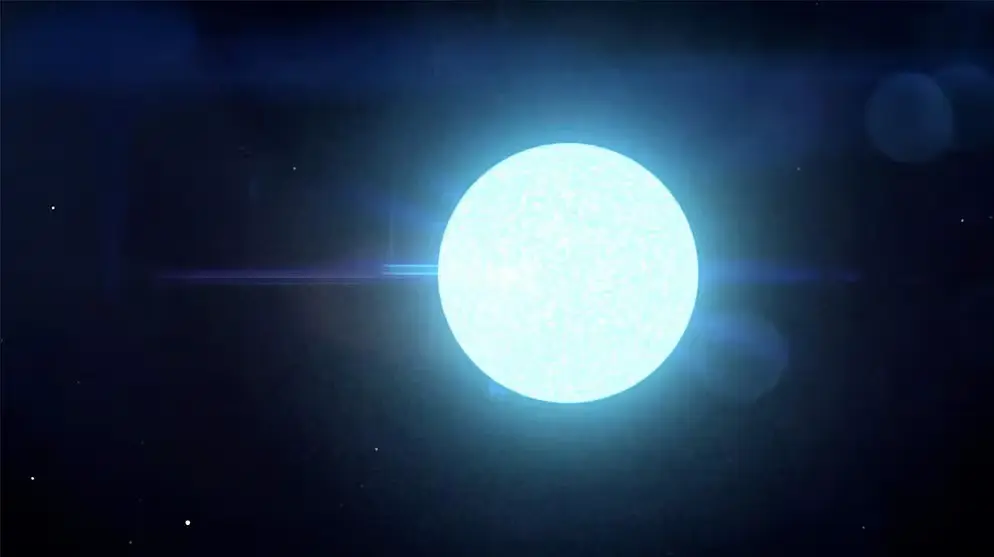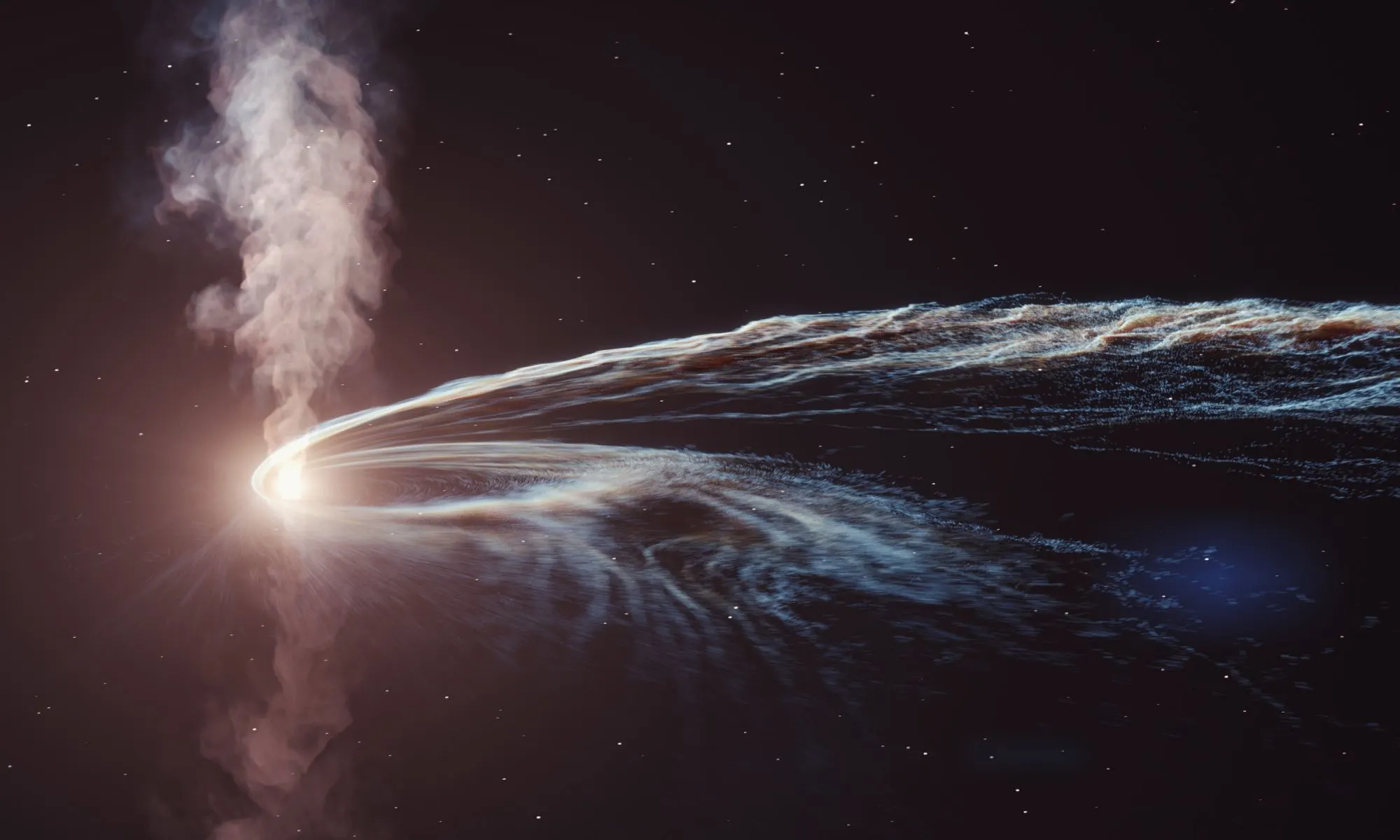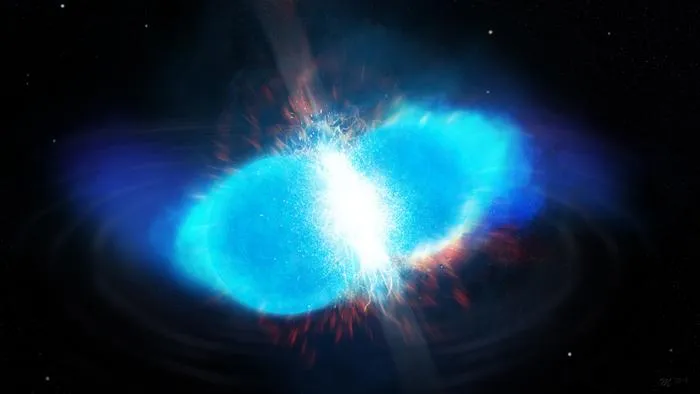[ez-toc]
Introduction: A Paradigm Shift in Astrophysics
The cosmos, a vast expanse of mysteries and wonders, has once again revealed a secret of monumental significance. Astounding new evidence of nuclear fission occurring in the distant reaches of space has emerged, propelling a paradigm shift in our understanding of the universe. This groundbreaking discovery, linking the cosmic phenomenon of nuclear fission to the creation of Earth’s heaviest elements, marks a pivotal moment in astrophysical research.
Unraveling the Cosmic Phenomenon of Nuclear Fission

The Discovery of Celestial Fission
Nuclear fission, a process well-known on Earth for its role in generating nuclear power, has now been identified in the most unlikely of places – the depths of space. Spearheaded by an international team of astrophysicists, including Dr. Ian Roederer and Matthew Mumpower, this discovery unveils the presence of nuclear fission in the aftermath of neutron star collisions. This revelation not only challenges our understanding of celestial phenomena but also reshapes our perception of the universe’s elemental composition.
Neutron Star Mergers: A Cosmic Crucible
Neutron stars, the remnants of once-mighty stars, often meet their end in a dramatic, cataclysmic fashion. These dense, compact objects, sometimes no larger than a city, represent the leftovers of massive stars that have undergone supernova explosions. When these remnants find themselves locked in a gravitational dance, their inevitable collision sets the stage for one of the universe’s most extraordinary events. This violent merger, a spectacle of raw cosmic power, facilitates the r-process – the rapid absorption and incorporation of free neutrons into atomic nuclei. This process is key to the formation of super-heavy elements, which, due to their instability, are prone to undergo nuclear fission, fragmenting into lighter, stable elements, including some like gold and platinum that are found on Earth.
The Mysterious Origins of Heavy Elements
Beyond the Iron Peak: Tracing Elements’ Cosmic Journey
The formation of elements heavier than iron has long been one of astrophysics’ most enduring mysteries. While stellar nuclear fusion efficiently produces elements up to iron, the genesis of the universe’s heavier elements, including precious metals like gold and silver, has remained elusive. The recent discovery that nuclear fission occurs following neutron star mergers provides a missing piece in this cosmic puzzle. These cosmic collisions, akin to celestial forges, are now believed to be the birthplace of many of the universe’s heavy elements.
Super-heavy Elements and their Cosmic Significance
Previously, the existence of elements with atomic masses greater than 260 was thought to be confined to human-made processes and experiments. This new revelation, however, indicates their natural occurrence in the universe, particularly in the aftermath of neutron star collisions. The recognition that such super-heavy elements are forged in space vastly enriches our understanding of the chemical diversity of the cosmos and the processes that have shaped it since the dawn of time.
Implications and Future Horizons in Astrophysics

A New Chapter in Cosmic Exploration
This groundbreaking discovery marks the beginning of a new chapter in the field of astrophysics. It not only validates theories that have been hypothesized for decades but also paves the way for future research. By confirming the occurrence of nuclear fission in space, astrophysicists can now delve deeper into the mechanics of element formation, unraveling the complex processes that govern the evolution of the cosmos.
Connecting the Cosmic Dots
This discovery highlights the intricate interplay of forces and processes that govern the universe. It tells a story of creation, destruction, and rebirth on a cosmic scale, emphasizing the interconnected nature of all things. From the death of massive stars to the formation of the elements that comprise our planet and ourselves, this narrative of cosmic alchemy illustrates the profound connections that bind the universe together.
Conclusion: Embracing a Universe of Possibilities
The evidence of nuclear fission in space not only adds a significant chapter to our understanding of the cosmos but also ignites our imagination about what other secrets the universe might hold. Challenging existing paradigms and expanding our knowledge, this discovery invites us to reconsider our place in the universe. As we continue to explore and unravel the mysteries of the cosmos, we edge closer to a deeper and more holistic understanding of the intricate tapestry that makes up our universe and our unique role within it.
To read more stories in Sci/Tech, click here

